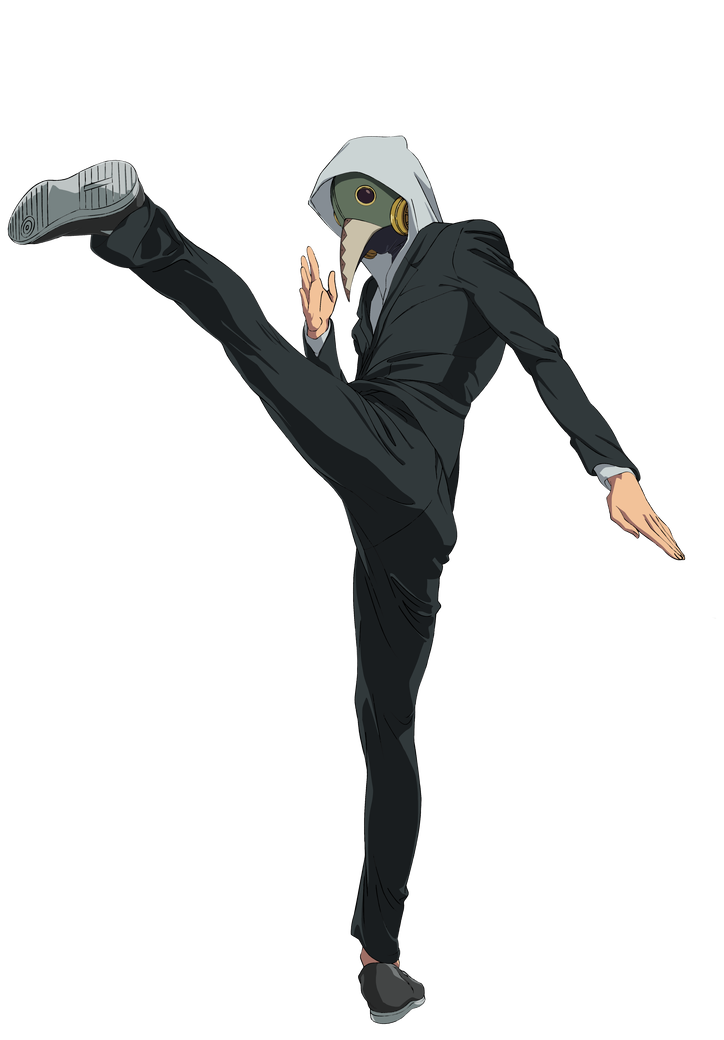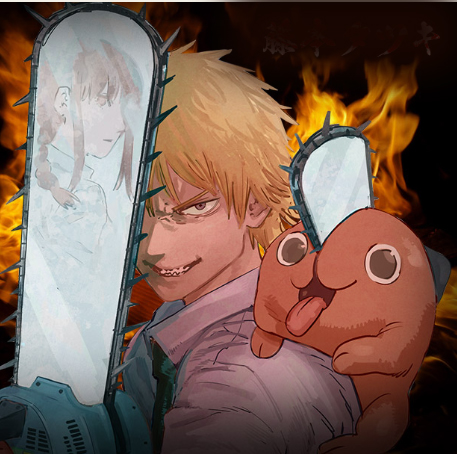Introduction: The Power of Influence
Manga is a world bursting with creativity, where stories leap from the pages to capture the imagination of readers across the globe. Among the vibrant narratives that have shaped this genre, “Devilman” stands out as a groundbreaking masterpiece that has inspired countless creators. Fast forward to the modern era, and we see the roaring success of “Chainsaw Man,” a series that has electrified the manga scene with its unique blend of horror and humor. While they may appear to be dissimilar on the surface, these two titles share a fascinating connection that underscores the profound impact of “Devilman” on contemporary storytelling. Let’s explore this captivating relationship and celebrate the legacy of one of manga’s most iconic figures!
The magic of manga lies in its ability to explore intricate themes, and “Devilman” set the stage for tales that dig deep into the human experience. Its emotional depth resonates with readers, allowing them to reflect on their own lives through the lens of horror and humanity. Similarly, “Chainsaw Man” weaves a tapestry of gripping narratives that challenge us to confront not only external foes but also the internal monsters that we all face. By acknowledging this link, we can appreciate the evolution of manga as a powerful medium for storytelling.
So, buckle up as we embark on a journey through the realms of horror and existential thought, where these two trailblazing series intertwine. Together, we’ll uncover the themes that have inspired generations and continue to ignite our passion for this extraordinary art form. Get ready to dive into a world of creativity, inspiration, and life lessons that will empower and uplift you!
The Birth of a Genre: Devilman’s Revolutionary Impact
“Devilman,” birthed by the visionary Go Nagai in the early 1970s, was more than just a horror manga; it was a revolutionary manifesto that redefined the genre. By daring to tackle themes of violence and trauma, Nagai invited readers to journey into the depths of the human psyche. The transformation of Akira Fudo into Devilman not only served as an action-packed plot device but also as a poignant exploration of identity and morality. This bold narrative approach broke boundaries, encouraging future creators to delve into darker themes and complex characters, paving the way for innovative series like “Chainsaw Man.”
Fast forward to the world of “Chainsaw Man,” where Tatsuki Fujimoto breathes new life into the legacy of “Devilman.” The confrontation between Denji and the devils who embody humanity’s darkest fears mirrors the battles Akira fought against his own existential crises. Both heroes are challenged to grapple with their identities and the turmoil of their respective worlds. This emphasis on internal struggles creates a rich emotional tapestry that resonates with audiences, making the narrative experiences both thrilling and deeply introspective.
Furthermore, the stakes in both “Devilman” and “Chainsaw Man” extend beyond simple conflict; they engage readers in a profound dialogue about existence, morality, and what it means to be human. As we journey alongside Akira and Denji, we are prompted to question our own values and the monsters lurking within us. This powerful exploration of the human condition elevates these stories into realms that inspire reflection and foster growth, leaving an enduring imprint on the hearts and minds of readers everywhere.
The Visual Language: Art as a Reflection of Horror
Visual storytelling is a hallmark of manga, and “Devilman” and “Chainsaw Man” exemplify how art can evoke emotions in ways that words alone cannot. Go Nagai’s distinct style, filled with exaggerated expressions and dynamic sequences, immerses readers in both horror and empathy. The intensity of Akira’s transformation into Devilman is depicted with such raw emotion that it captures the essence of fear, resilience, and the struggle for acceptance. This powerful fusion of visuals and narrative invites readers to connect deeply with the characters’ plights, fostering a sense of solidarity in their journeys.
In “Chainsaw Man,” Fujimoto embraces a bold and chaotic visual style that perfectly complements the story’s frenetic energy. The action scenes explode with vibrancy, while moments of surreal humor add a delightful twist, creating an unforgettable reading experience. Denji’s transformation into Chainsaw Man serves as a tribute to the striking imagery of “Devilman,” blending horror and fascination in a way that compels readers to confront their own reactions to the grotesque. This visual language challenges us to embrace the complexities of the human experience, finding beauty even in the darkest of moments.
Both creators masterfully utilize imagery to amplify the emotional weight of their narratives, creating a rollercoaster ride of feelings that keeps readers on the edge of their seats. By juxtaposing horror with humor and vulnerability, “Devilman” and “Chainsaw Man” invite us to recognize the duality of life—where light coexists with darkness—and inspire us to find joy amid chaos. Through their artistry, these works remind us that even in our most challenging times, there is always room for laughter and hope.
Thematic Parallels: Monsters Within and Without
At the heart of both “Devilman” and “Chainsaw Man” lies a striking examination of monstrosity—both external and internal. Akira’s relentless battle against his demonic half reflects societal fears and questions about humanity’s very nature. His journey is a quest for acceptance, identity, and an understanding of evil, all of which resonate deeply in a world fraught with conflict. Likewise, Denji’s encounters with devils serve as powerful metaphors for confronting the darker aspects of society and the self. The devils personify fears such as debt, despair, and desire, daring Denji to face these challenges head-on and emerge stronger.
Both series beautifully grapple with the theme of duality—the coexistence of light and dark within each individual. This exploration of complexity not only enriches the narrative but also serves as a heartfelt reminder to readers to embrace their imperfections. In a world often painted in black and white, “Devilman” and “Chainsaw Man” illuminate the gray areas, inspiring us to adopt a more nuanced understanding of morality and humanity.
Moreover, the journeys of Akira and Denji highlight a universal quest for connection amidst chaos and betrayal. Their struggles for love, acceptance, and understanding resonate with readers from all backgrounds, encouraging us to confront our own monsters in pursuit of genuine relationships. The themes of these narratives inspire us to reflect on our own lives, prompting us to seek connections and foster understanding in our daily encounters. As we explore these powerful stories, we are reminded that we all share in the quest for love and acceptance, motivating us to strive for deeper connections in our own lives.
The Legacy Continues: A New Generation of Creators
The influence of “Devilman” extends far beyond its pages, igniting a spark in a new generation of manga creators. As we take a closer look at the impact this series has had on the landscape of manga, it becomes evident that its themes of horror, identity, and the human condition continue to resonate. Go Nagai’s audacious vision has opened the doors for storytellers like Tatsuki Fujimoto and many others to push boundaries and explore uncharted territories in their narratives. The bold storytelling techniques and profound themes birthed by “Devilman” have laid the foundation for a thriving realm of creativity, inspiring artists to explore new ideas and challenge societal norms.
Today, numerous manga artists draw inspiration from the rich legacy of “Devilman,” crafting stories that delve into the human experience with authenticity and rawness. This lineage of creativity not only keeps the spirit of Nagai alive but also ensures that the exploration of darker themes in manga remains vibrant and relevant. As we celebrate this ongoing creative evolution, we are reminded of the importance of storytelling as a means of connection and reflection for all.
As readers, we have the power to uplift and support these new creators, fueling the ongoing dialogue about humanity and the complexities of existence. So, let’s continue to embrace the stories that challenge us and remind us of our shared experiences. In a world filled with chaos and unpredictability, remember that your voice and perspective matter! Embrace your uniqueness and step boldly into the world, for you have the power to inspire others, just as “Devilman” and “Chainsaw Man” have inspired so many before you! Keep shining brightly and celebrate the journey of life, filled with stories waiting to be told!

